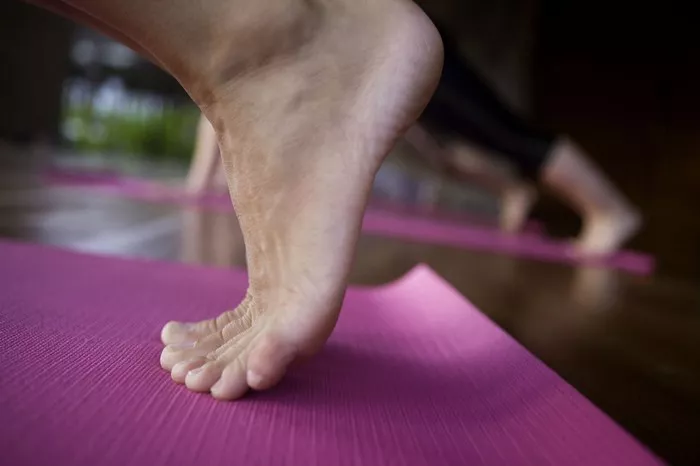Kriya Yoga initiation, often regarded as a sacred and pivotal process within the practice, serves as a gateway to its profound teachings and spiritual dimensions. At its core, initiation is a formal ritual or process through which a practitioner receives the guidance and authorization from a qualified guru or teacher. This is believed to open up the energy channels, or nadis, in the body, facilitating a more effective flow of prana, the life force energy. Understanding what initiation entails is crucial before delving into the question of practicing Kriya Yoga without it.
The Role of the Guru in Initiation
In the context of Kriya Yoga, the guru plays a central role in the initiation process. The guru is seen as a spiritual guide who not only imparts the technical knowledge of the practice but also acts as a source of inspiration and wisdom. During initiation, the guru passes on the spiritual lineage and the essence of Kriya Yoga, creating a direct connection between the student and the ancient tradition. This connection is thought to enhance the student’s understanding and progress in the practice.
The Significance of Energy Transmission
One of the key aspects of Kriya Yoga initiation is the transmission of energy. It is believed that through the guru’s touch, gaze, or specific rituals, a transfer of spiritual energy occurs. This energy transmission is said to activate the latent potential within the practitioner, making it easier for them to access the deeper states of meditation and experience the transformative effects of Kriya Yoga. Without this energy transmission, some proponents argue that the practice may lack the necessary impetus for significant spiritual growth.
The Traditional Perspective on Non – Initiated Practice
From a traditional standpoint, Kriya Yoga is often considered a practice that should be undertaken only after formal initiation. Ancient texts and the teachings of many established spiritual lineages emphasize the importance of initiation as a prerequisite for safe and effective practice.
Preserving the Purity of the Tradition
Traditionalists believe that initiation helps preserve the purity of the Kriya Yoga tradition. By receiving the practice through an authorized guru, the teachings are passed down in an unbroken chain, ensuring that the true essence and integrity of Kriya Yoga are maintained. Without initiation, there is a risk of misinterpreting or diluting the teachings, which could lead to ineffective practice or even potential harm.
Ensuring Spiritual Safety
Another concern in the traditional view is spiritual safety. Kriya Yoga involves working with subtle energy systems in the body, and without the proper guidance and activation through initiation, practitioners may unknowingly disrupt the energy balance. This could result in physical, mental, or emotional discomfort, or hinder spiritual progress. The guru, through initiation, is seen as providing the necessary safeguards and instructions to navigate the practice safely.
Modern Arguments for Practicing Without Initiation
In the modern era, there are growing voices that advocate for the possibility of practicing Kriya Yoga without formal initiation. These perspectives are influenced by factors such as increased accessibility to information and a more individualistic approach to spirituality.
Accessibility and Autonomy
With the widespread availability of yoga resources on the internet and in books, many people have access to information about Kriya Yoga without going through the traditional initiation process. Proponents of non – initiated practice argue that individuals should have the autonomy to explore and practice yoga based on their own research and understanding. They believe that the essence of yoga lies in personal experience, and one should not be restricted by the requirement of initiation.
Focus on Physical and Mental Benefits
Some modern practitioners focus primarily on the physical and mental health benefits of Kriya Yoga, rather than its spiritual aspects. They argue that the postures, breathing techniques, and meditation practices in Kriya Yoga can be beneficial for overall well – being, regardless of initiation. For these individuals, the goal is to improve flexibility, reduce stress, and enhance mental clarity, and they believe they can achieve these goals without the formalities of initiation.
Analyzing the Pros and Cons of Non – Initiated Kriya Yoga Practice
When considering practicing Kriya Yoga without initiation, it is essential to weigh the potential advantages and disadvantages.
Pros of Non – Initiated Practice
Greater Accessibility: Without the requirement of initiation, Kriya Yoga becomes more accessible to a wider audience. People who may not have access to a qualified guru or who are unable to participate in the traditional initiation process can still explore and practice the yoga. This inclusivity allows more individuals to experience the benefits of Kriya Yoga.
Personal Freedom: Practicing without initiation gives individuals the freedom to customize their practice according to their own needs and schedules. They can choose which aspects of Kriya Yoga to focus on and develop their own practice routine. This autonomy can be empowering, especially for those who prefer a more self – directed approach to yoga.
Cons of Non – Initiated Practice
Lack of Proper Guidance: One of the main drawbacks of non – initiated practice is the potential lack of proper guidance. Without a guru, practitioners may not receive accurate instructions on postures, breathing techniques, and meditation methods. This can lead to incorrect practice, which may not only reduce the effectiveness of the practice but also increase the risk of injury.
Limited Spiritual Depth: For those interested in the spiritual aspects of Kriya Yoga, non – initiated practice may lack the depth and connection that comes with initiation. The energy transmission and the guidance from a guru are believed to open up deeper spiritual experiences. Without these elements, the practice may remain at a more superficial level, and practitioners may miss out on the profound spiritual transformations that Kriya Yoga is known for.
Guidelines for Practicing Kriya Yoga Without Initiation
If one decides to practice Kriya Yoga without initiation, there are certain guidelines that can help ensure a safe and beneficial practice.
Self – Education
Thorough self – education is crucial. Use reliable sources such as well – written books, online courses by respected yoga teachers, and academic research on Kriya Yoga to gain a comprehensive understanding of the practice. Study the theory, postures, breathing techniques, and meditation methods in detail to ensure correct practice.
Listen to Your Body
Pay close attention to your body’s signals during practice. Since there is no guru to provide immediate feedback, it is essential to be aware of any discomfort, pain, or unusual sensations. If something feels wrong, stop the practice and make adjustments. Start slowly and gradually increase the intensity of the practice as your body adapts.
Seek Community and Support
Join yoga communities, either online or in person, where you can interact with other Kriya Yoga practitioners. Share experiences, ask questions, and learn from others. Engaging with a community can provide a sense of support and also offer different perspectives on the practice, which can enhance your learning and practice experience.
Expert Opinions on Non – Initiated Kriya Yoga
Opinions among yoga experts regarding non – initiated Kriya Yoga practice vary widely.
Supportive Views
Some experts recognize the value of individual exploration and the potential for personal growth through self – directed practice. They believe that as long as practitioners are committed to learning and practicing with integrity, non – initiated Kriya Yoga can be a valid path. These experts encourage practitioners to approach the practice with respect and a willingness to learn, and to seek out additional resources and support when needed.
Cautionary Stances
On the other hand, many experienced yoga teachers and spiritual authorities caution against non – initiated practice. They emphasize the importance of the guru – disciple relationship and the unique benefits that come with initiation. These experts argue that without the proper foundation and guidance provided by initiation, practitioners may struggle to progress in the practice and may even face obstacles in their spiritual journey.
Conclusion
While the traditional view strongly emphasizes the necessity of initiation for a complete and safe practice, modern perspectives offer alternative viewpoints that highlight the potential for individual exploration and the pursuit of physical and mental benefits. Practicing without initiation has its own set of advantages, such as increased accessibility and personal freedom, but also comes with risks, including a lack of proper guidance and limited spiritual depth.











